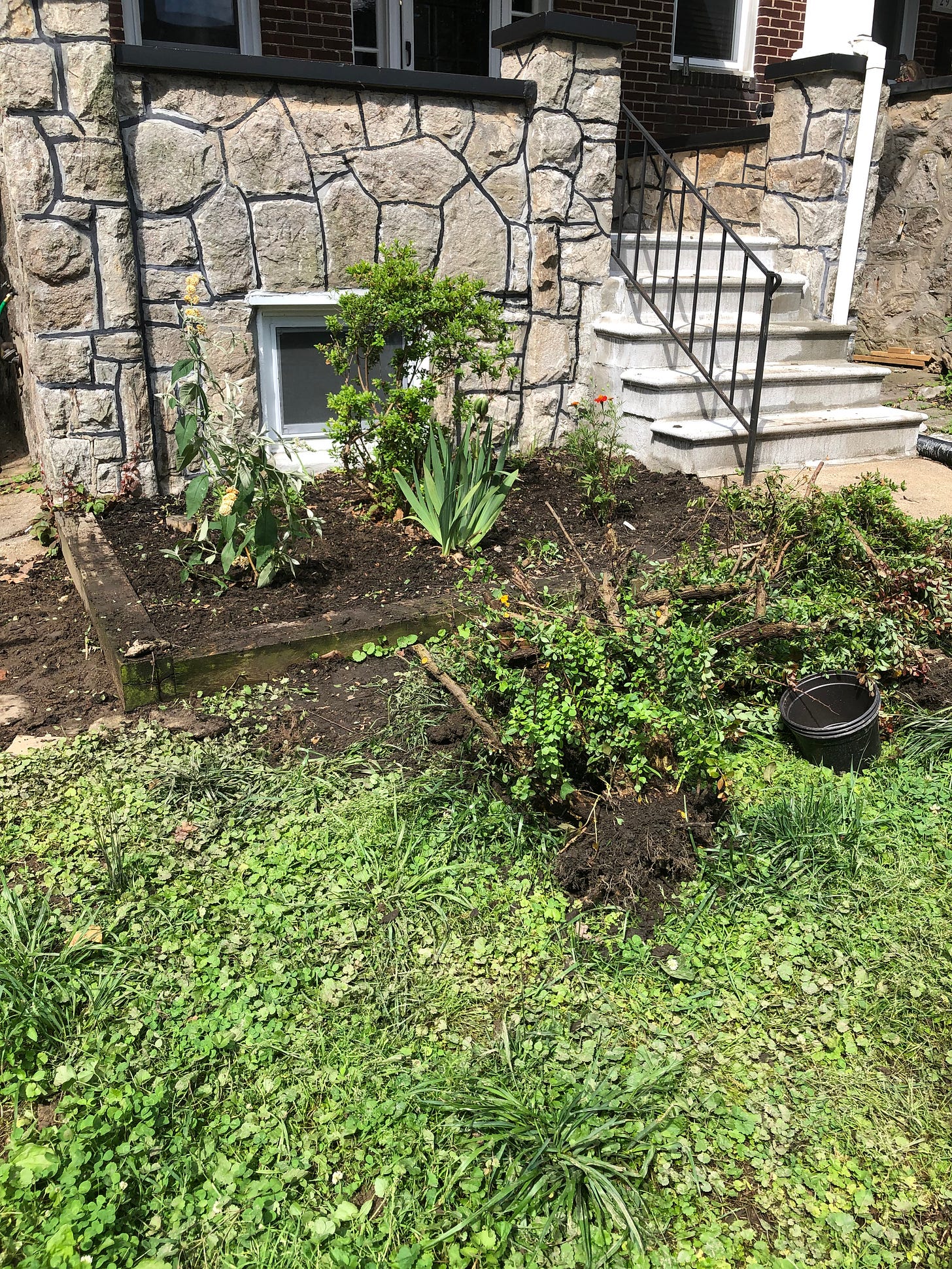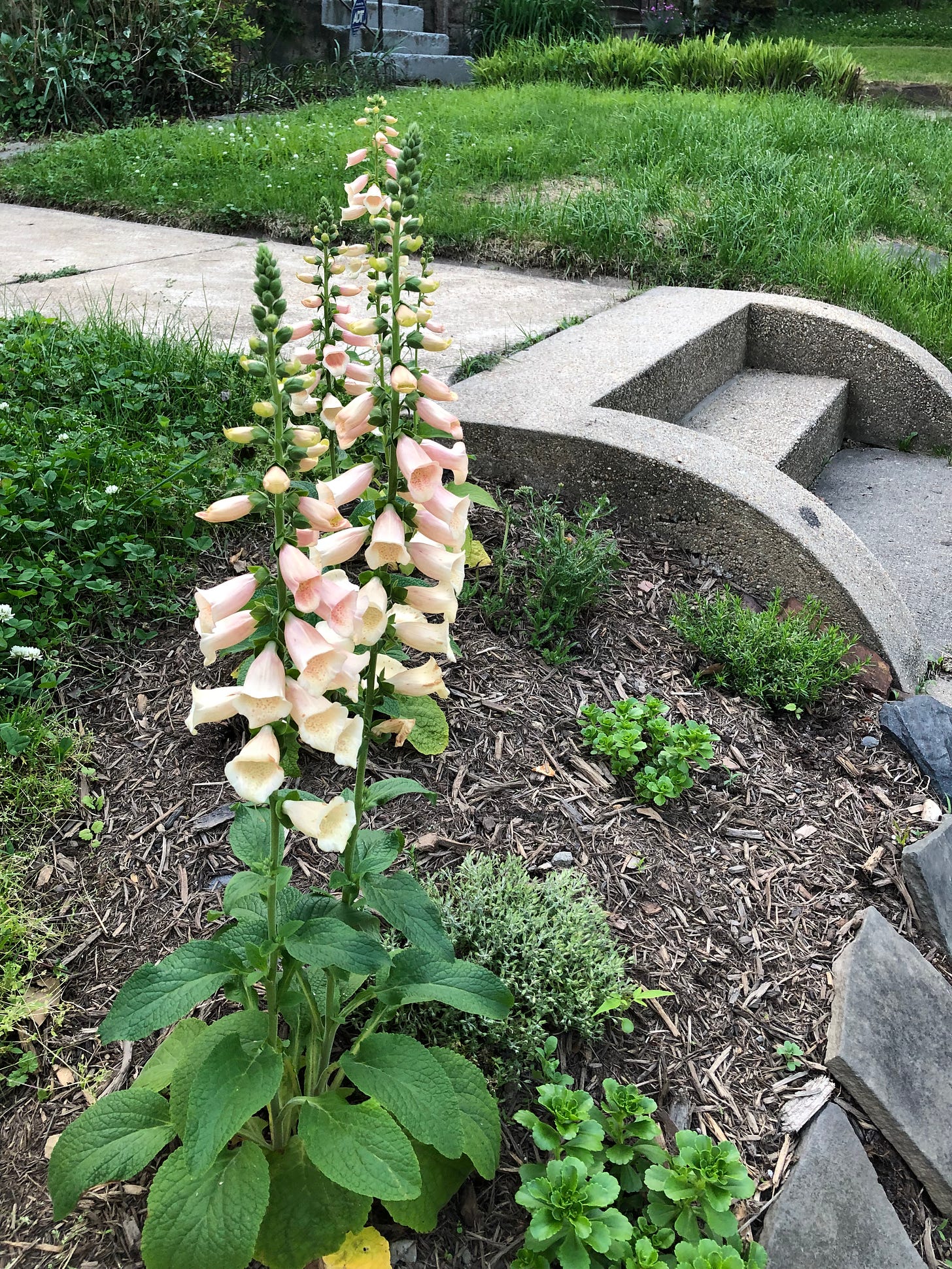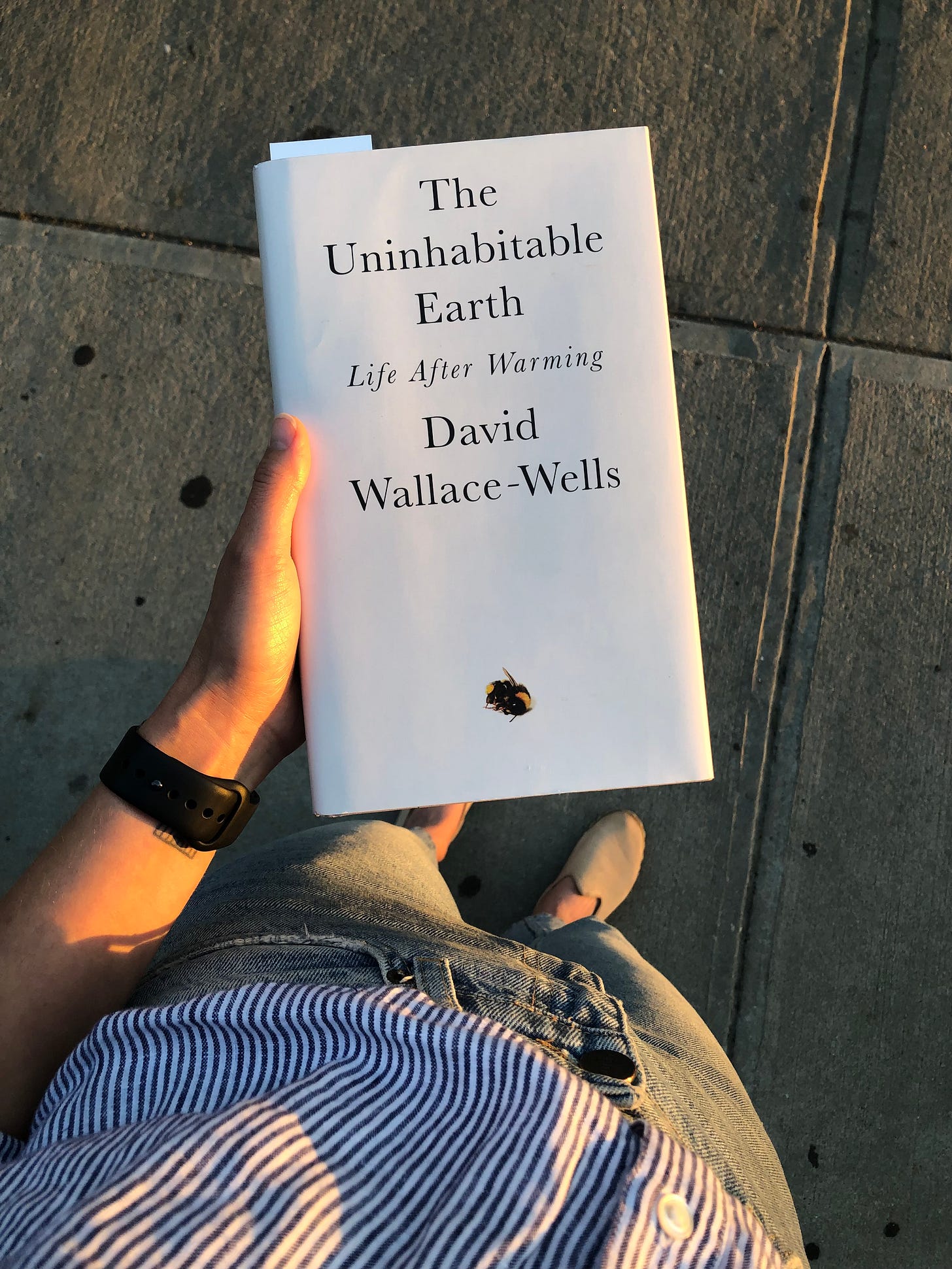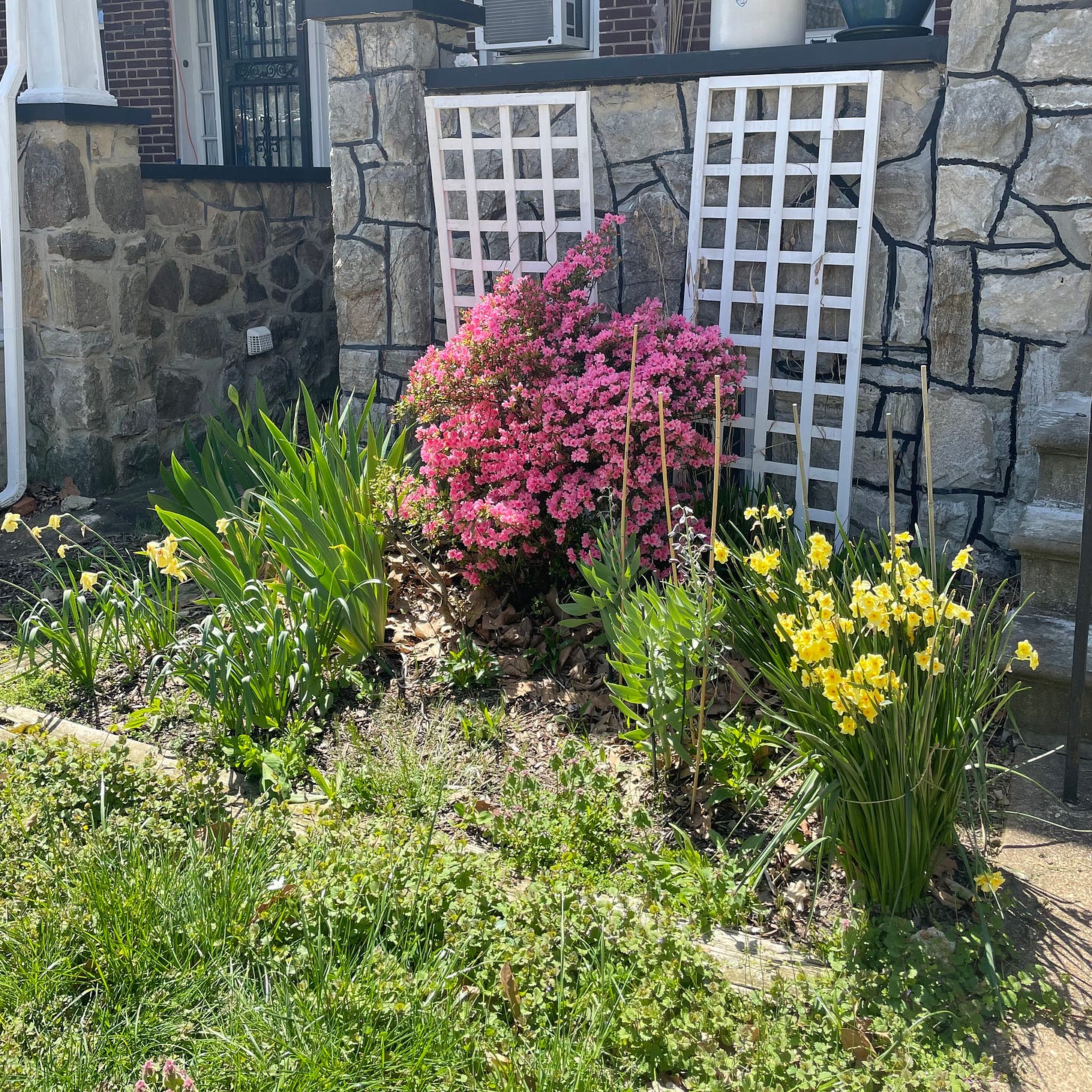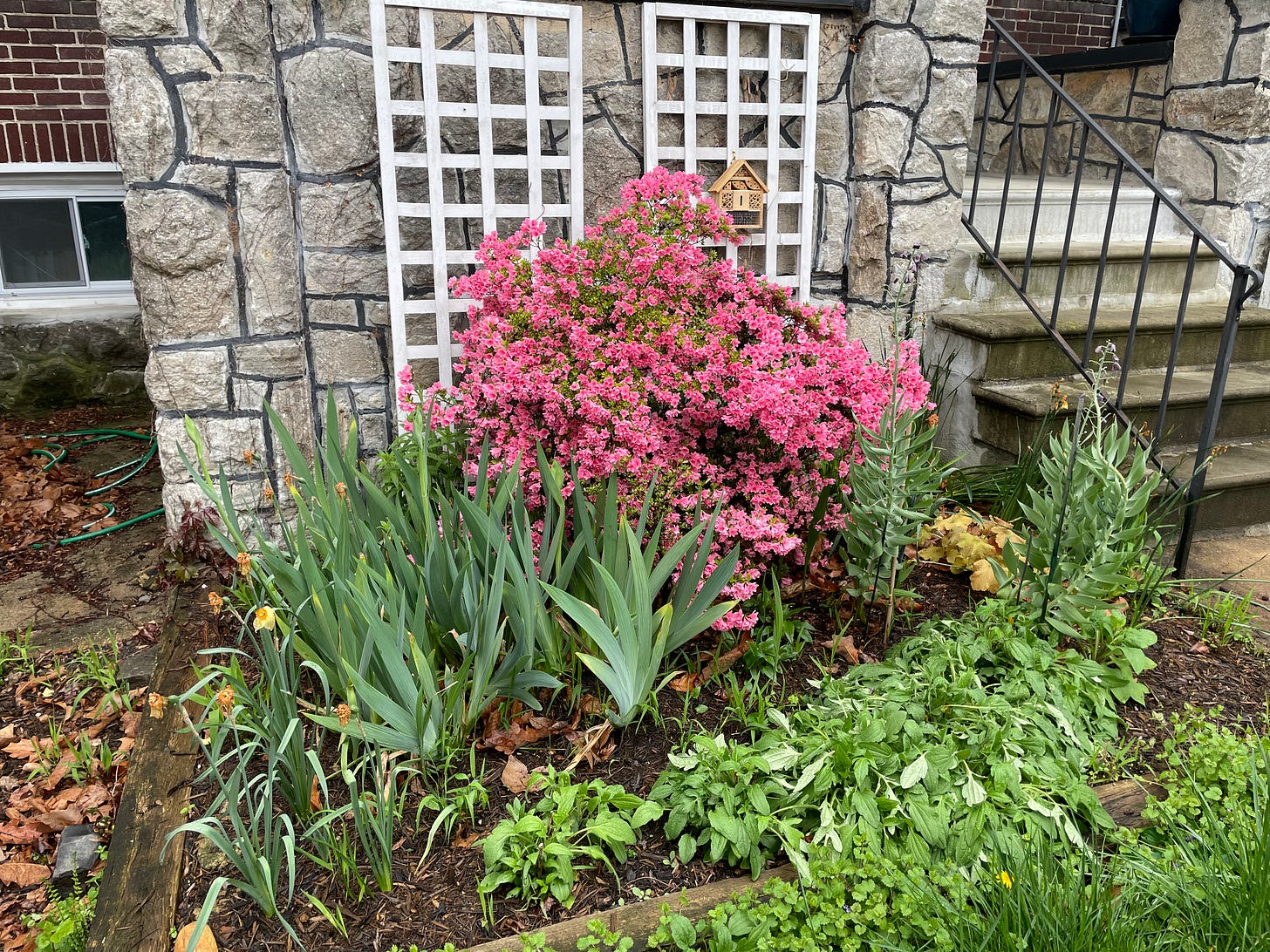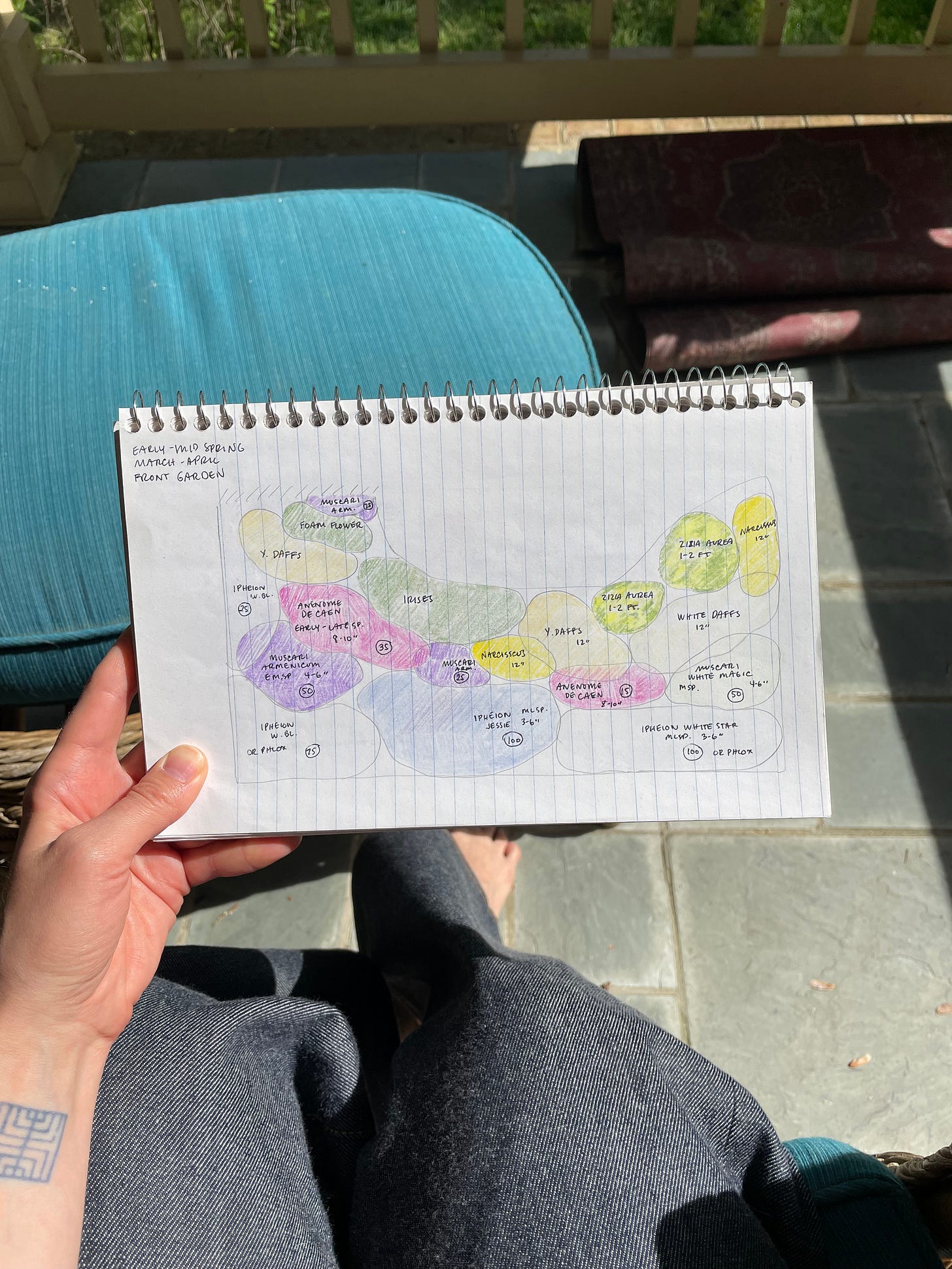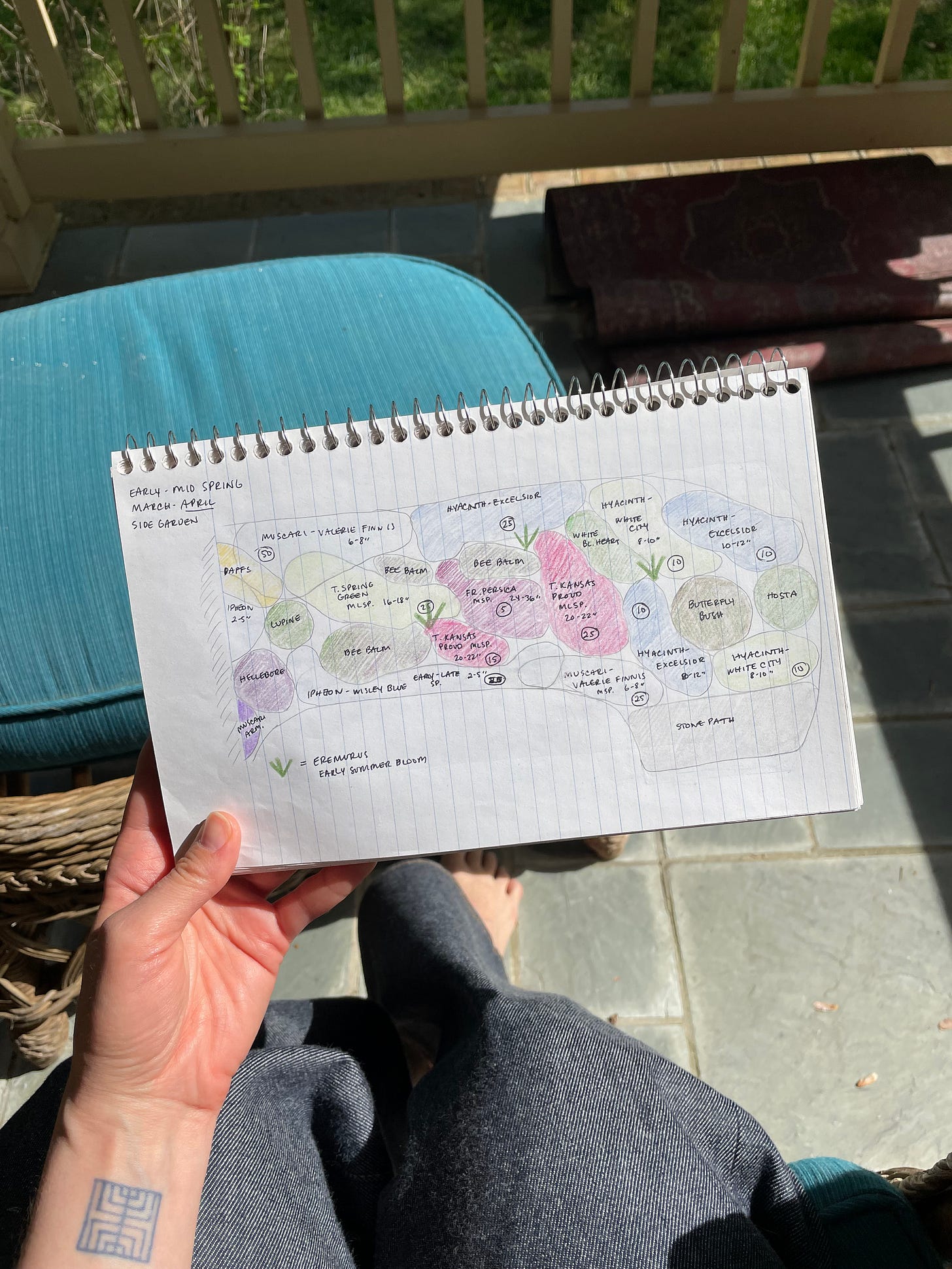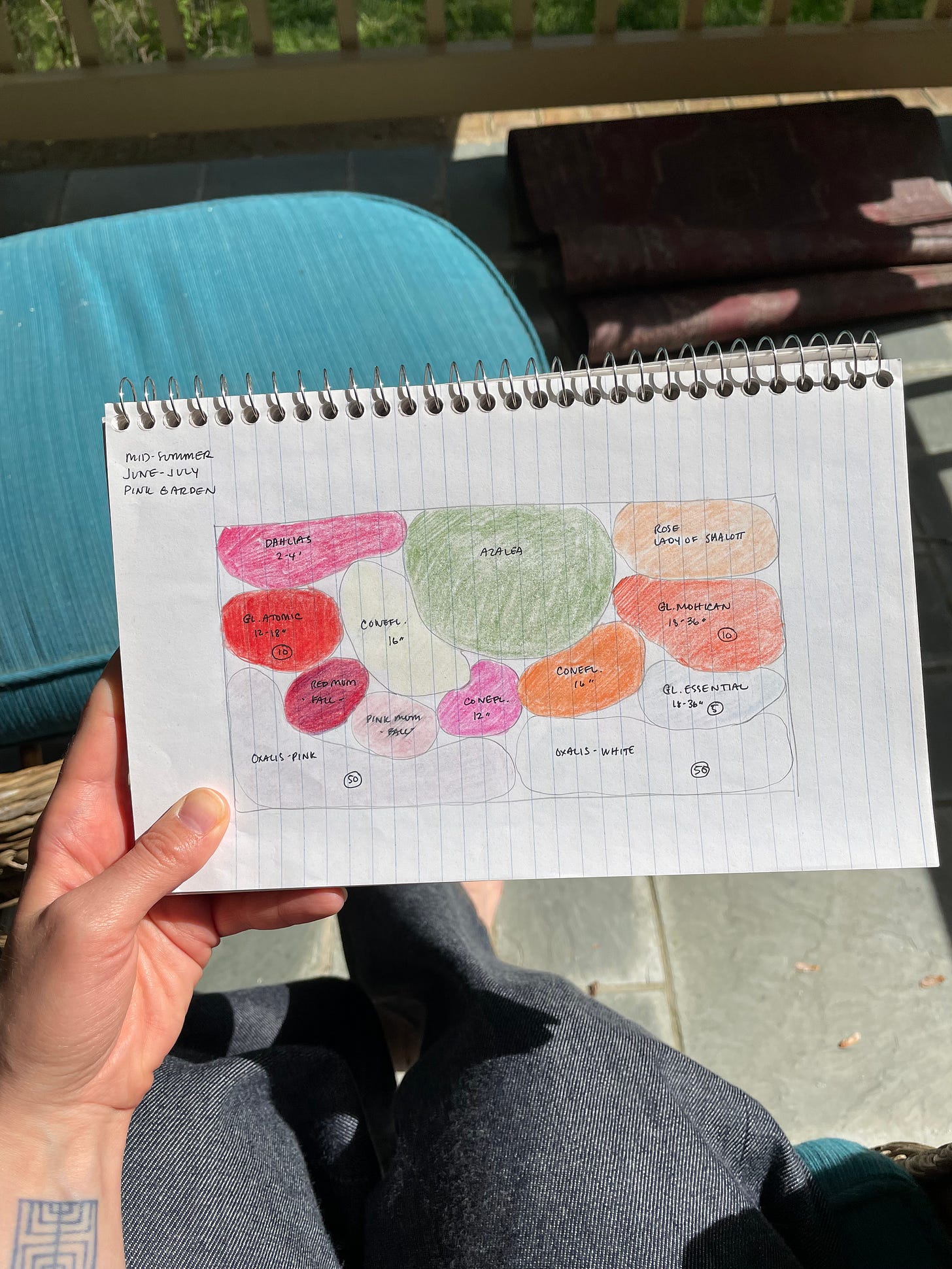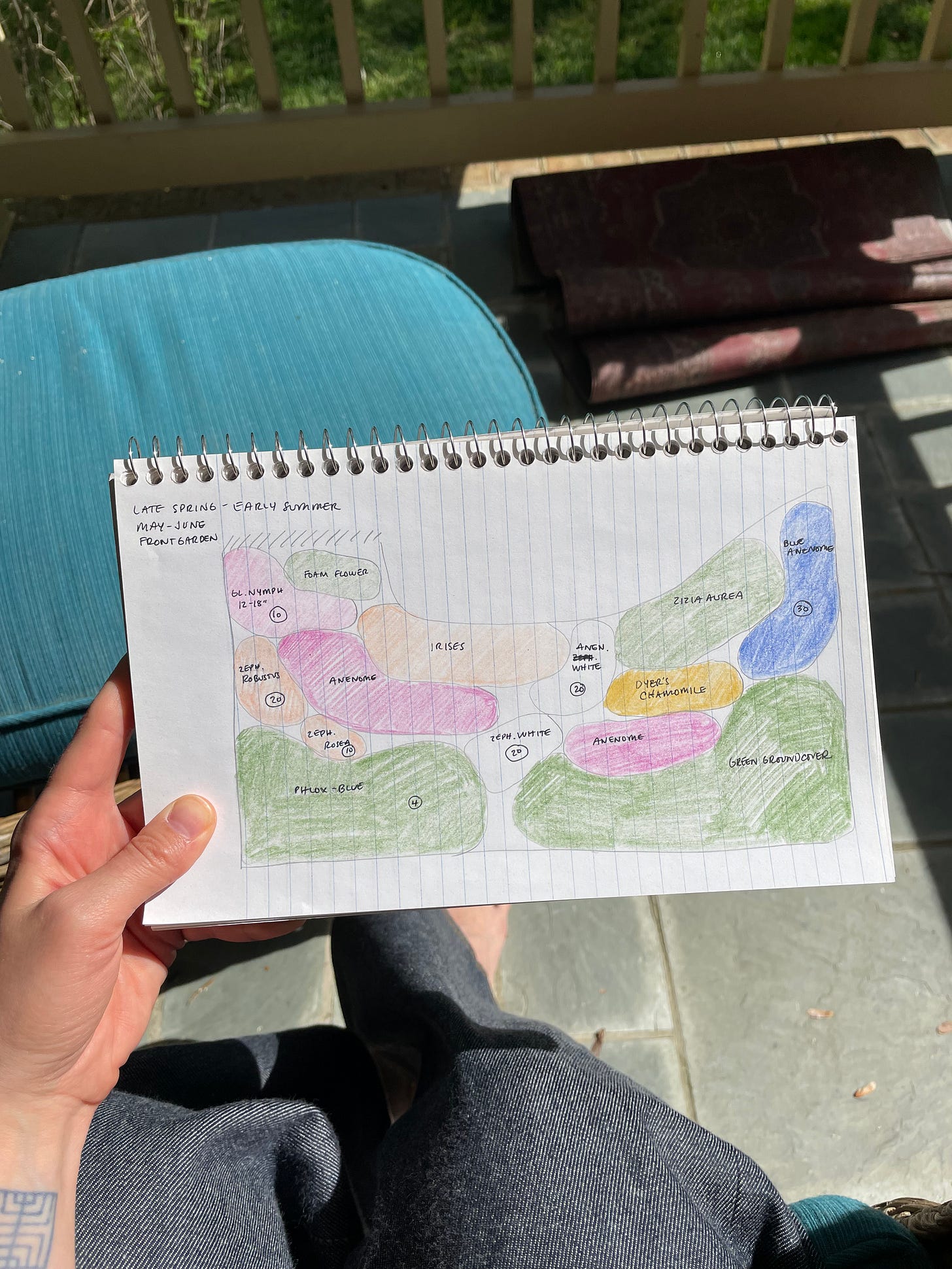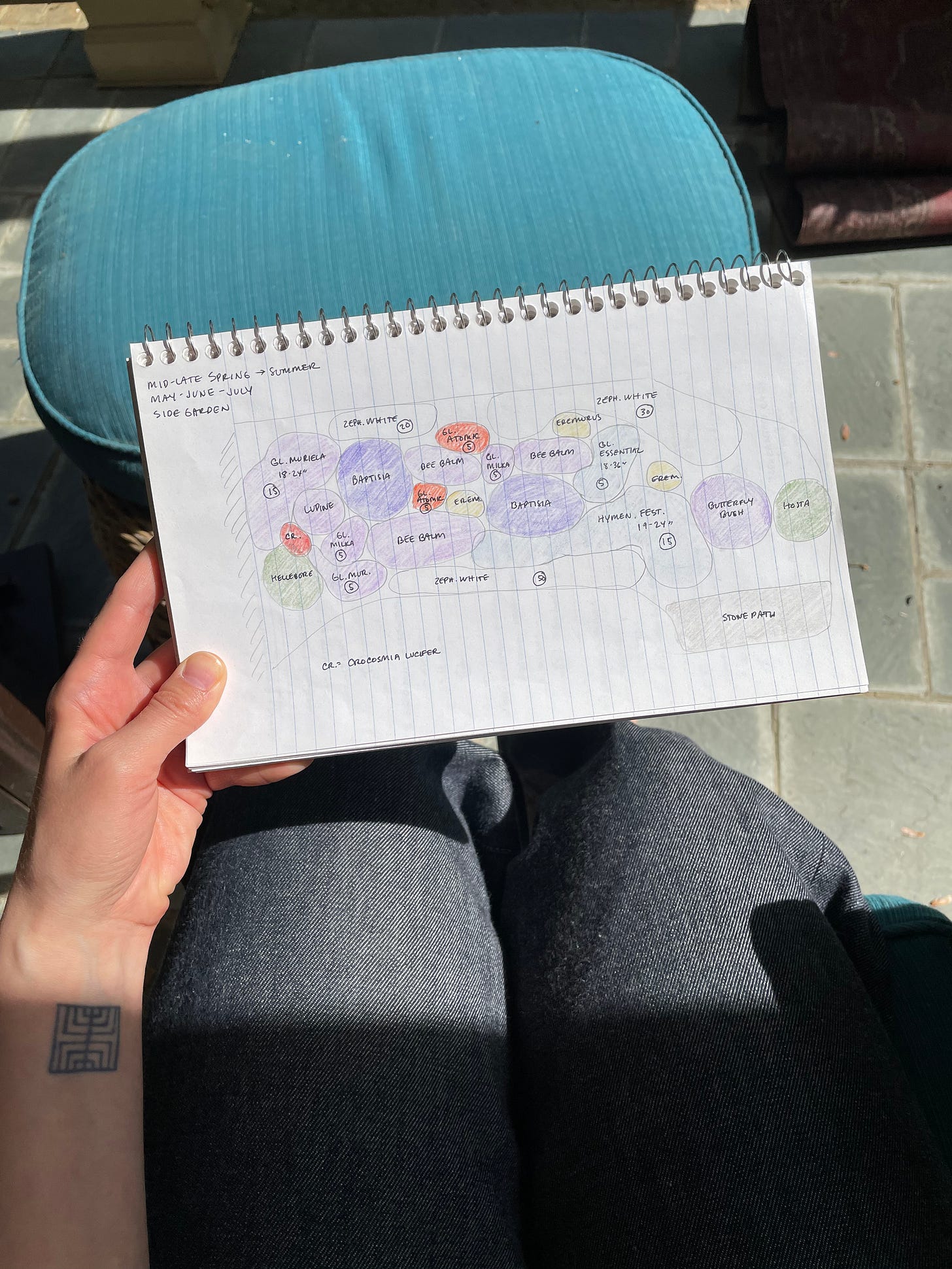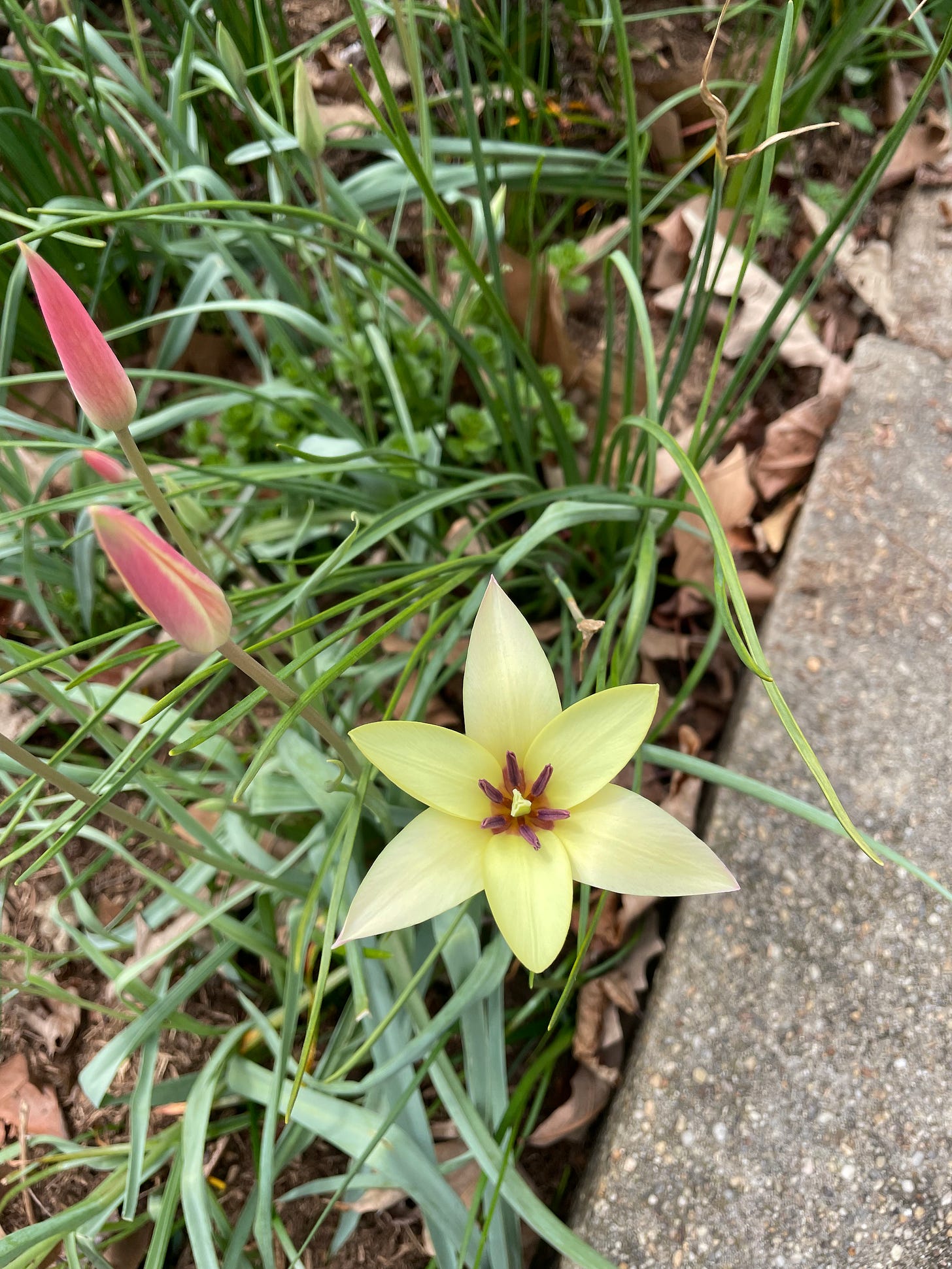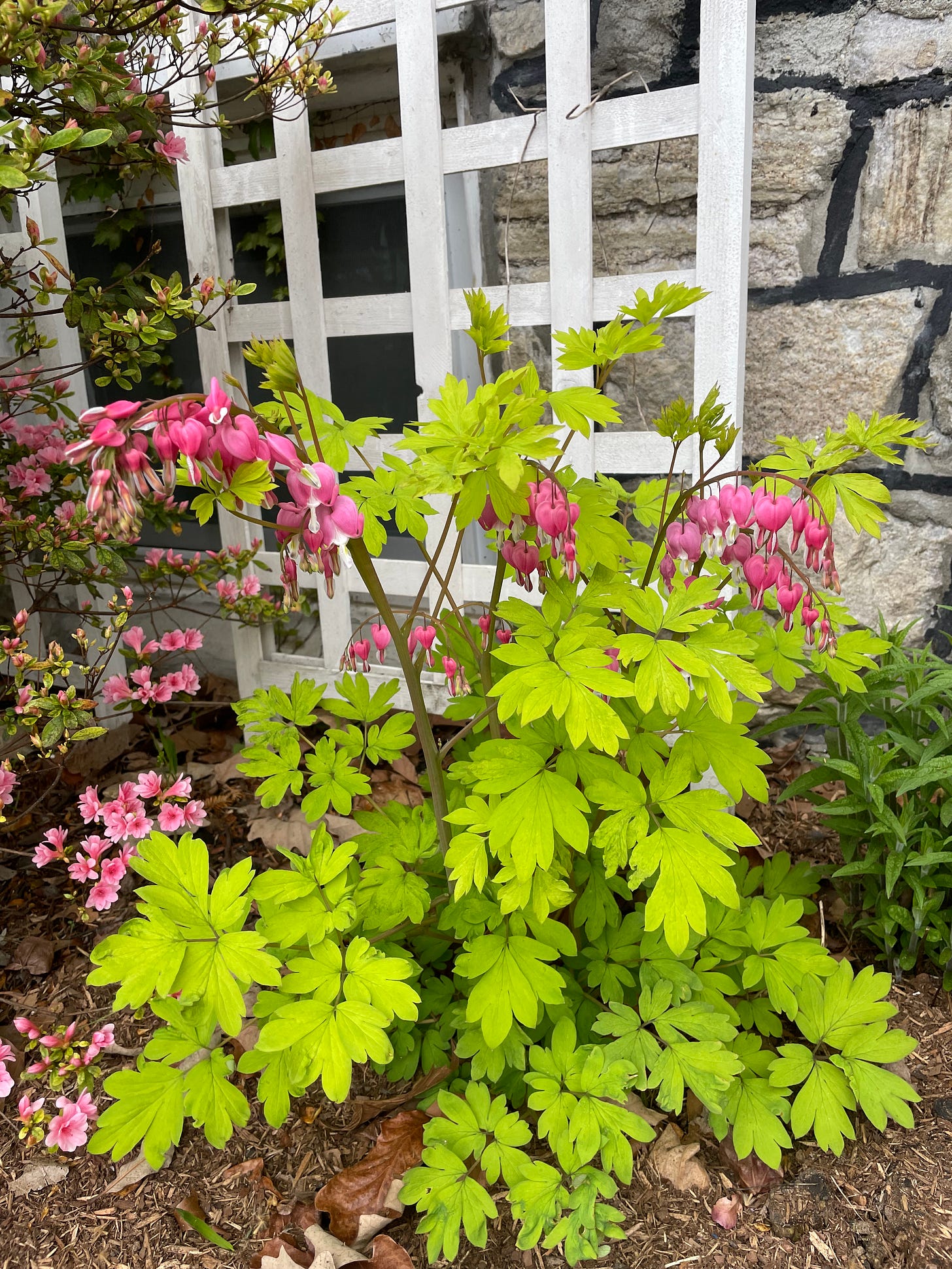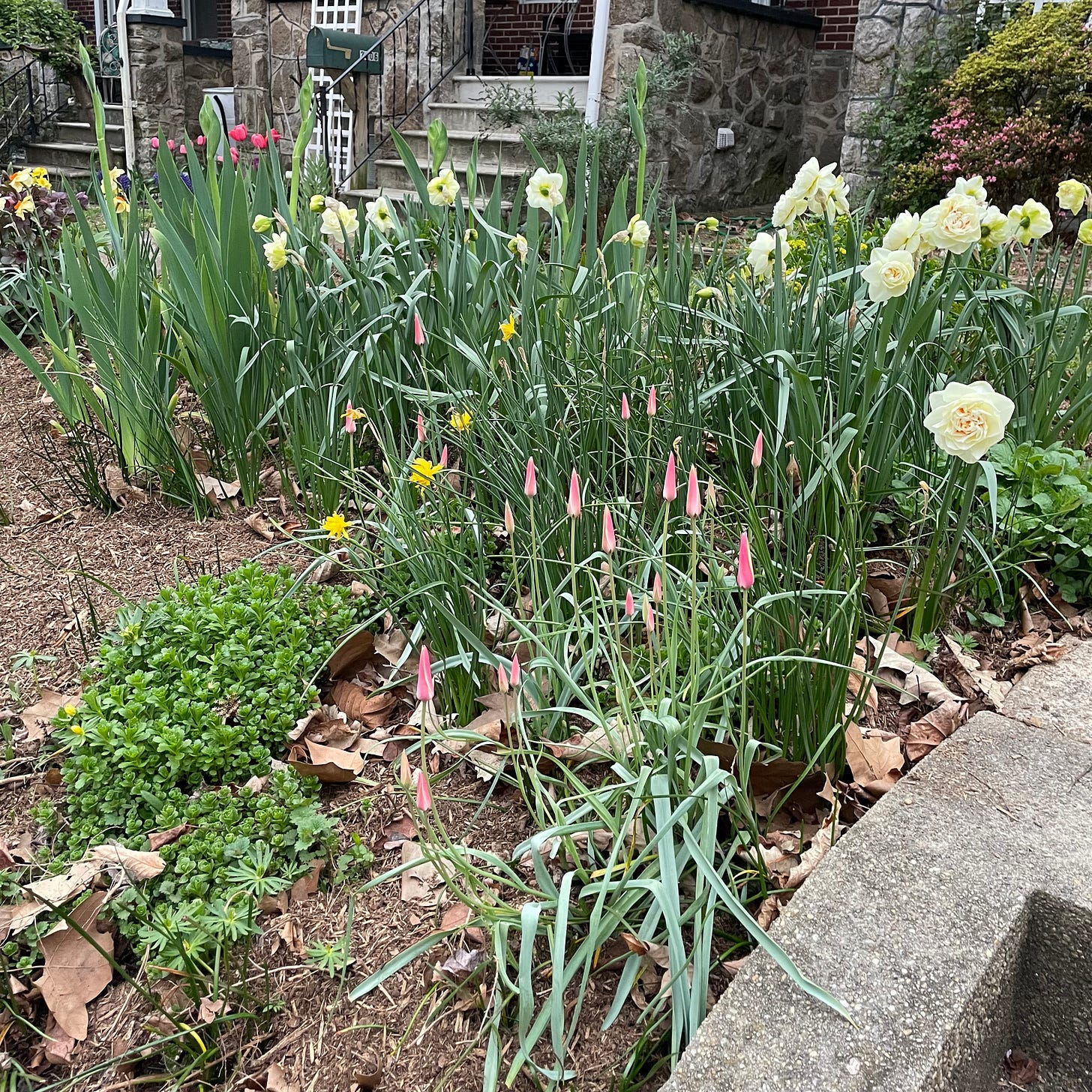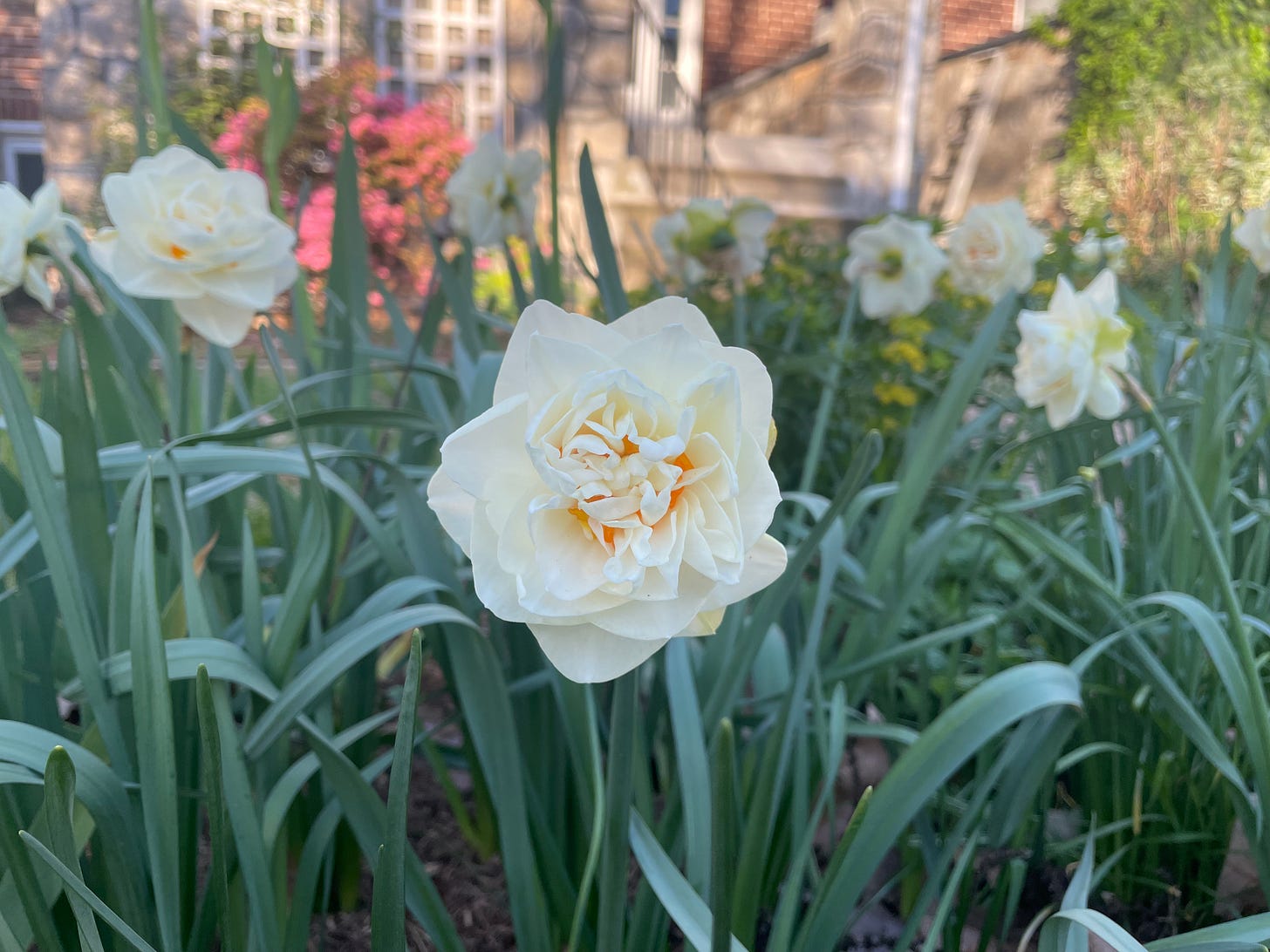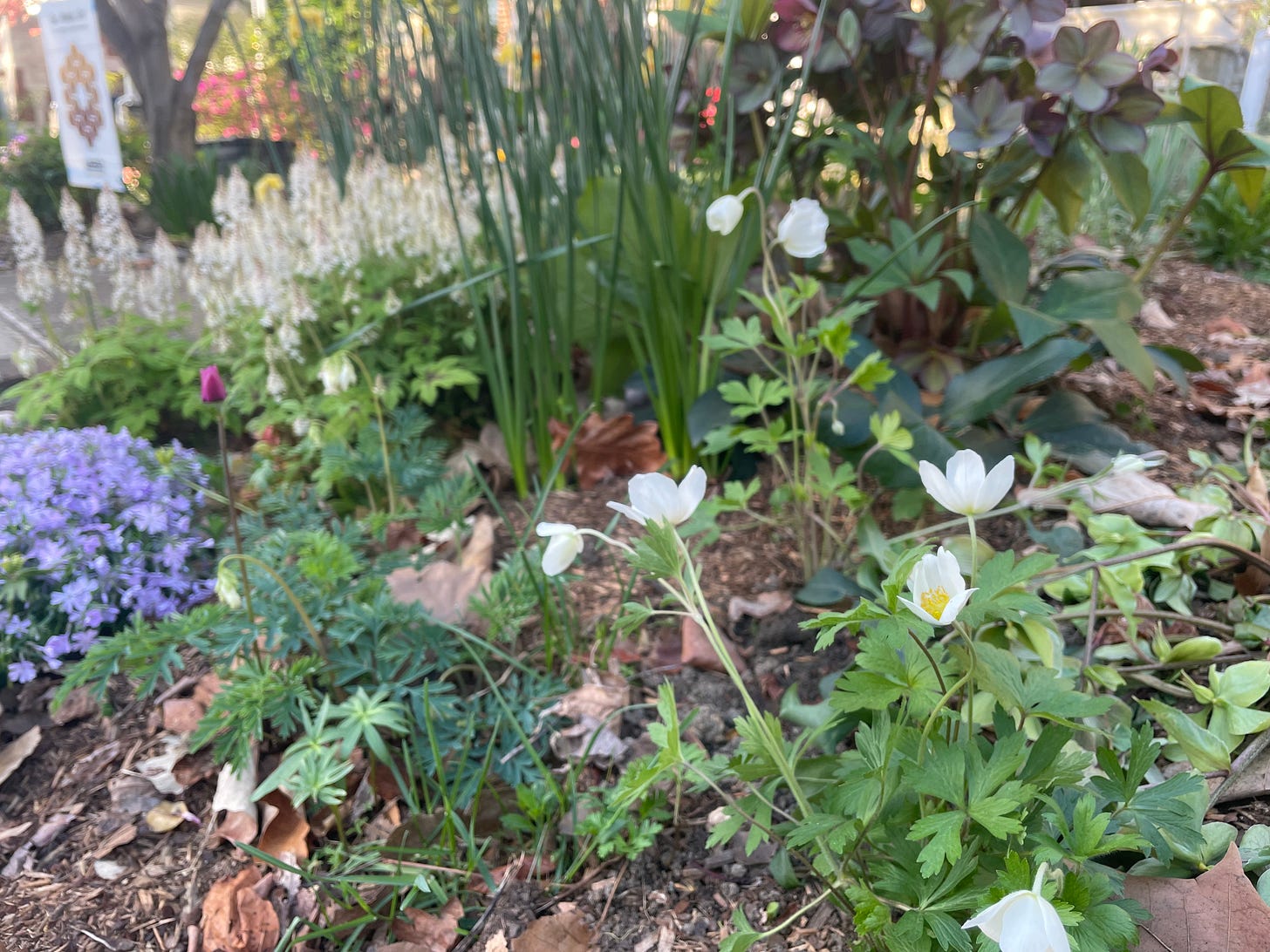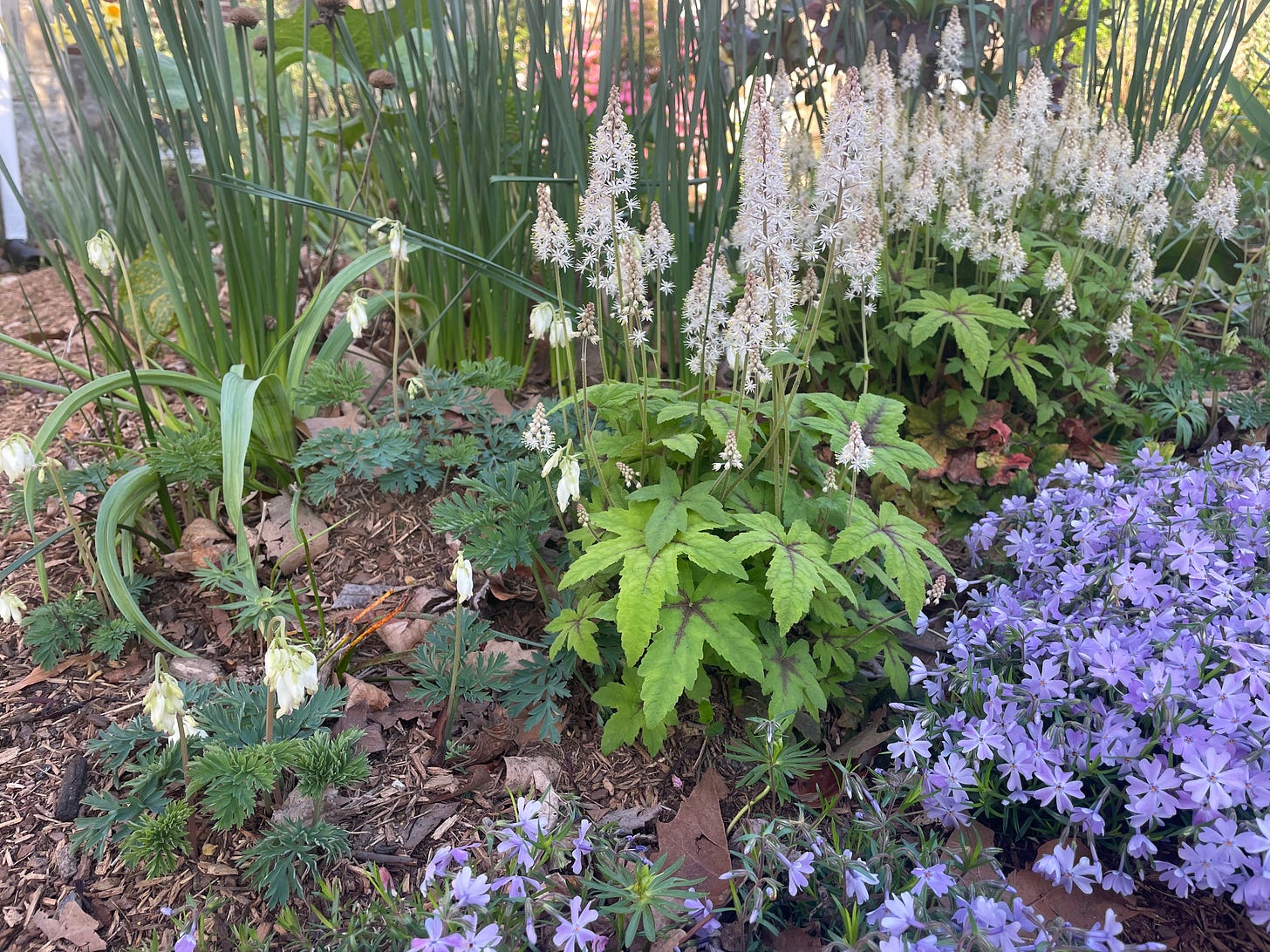When I started gardening five years ago, I started with a front plot stuffed with two hedges and an anemic azalea in the back. We had just moved from a 1-bedroom apartment into a house, still in the city, on a block lined with trees, messy gardens, and porches strung with Christmas lights, even in March.
In a small, empty triangle patch by the sidewalk, I added a yarrow that never took and a few foxgloves that came and went with the seasons. At the plant nursery, I bought single plants that I liked, with no sense of their capacity to grow, their seasonality, the structure and shade of their foliage, or their color relationship to other plants in the garden. I was enjoying the process, but the garden looked disjointed. Sparse in parts and overgrown in others.
2019 was also the year I read my first climate book, The Uninhabitable Earth: Life After Warming by David Wallace-Wells. My new gardening hobby felt imbued with purpose, as a gentle (and maybe futile) act of resistance and resilience, of creating habitat for pollinators.
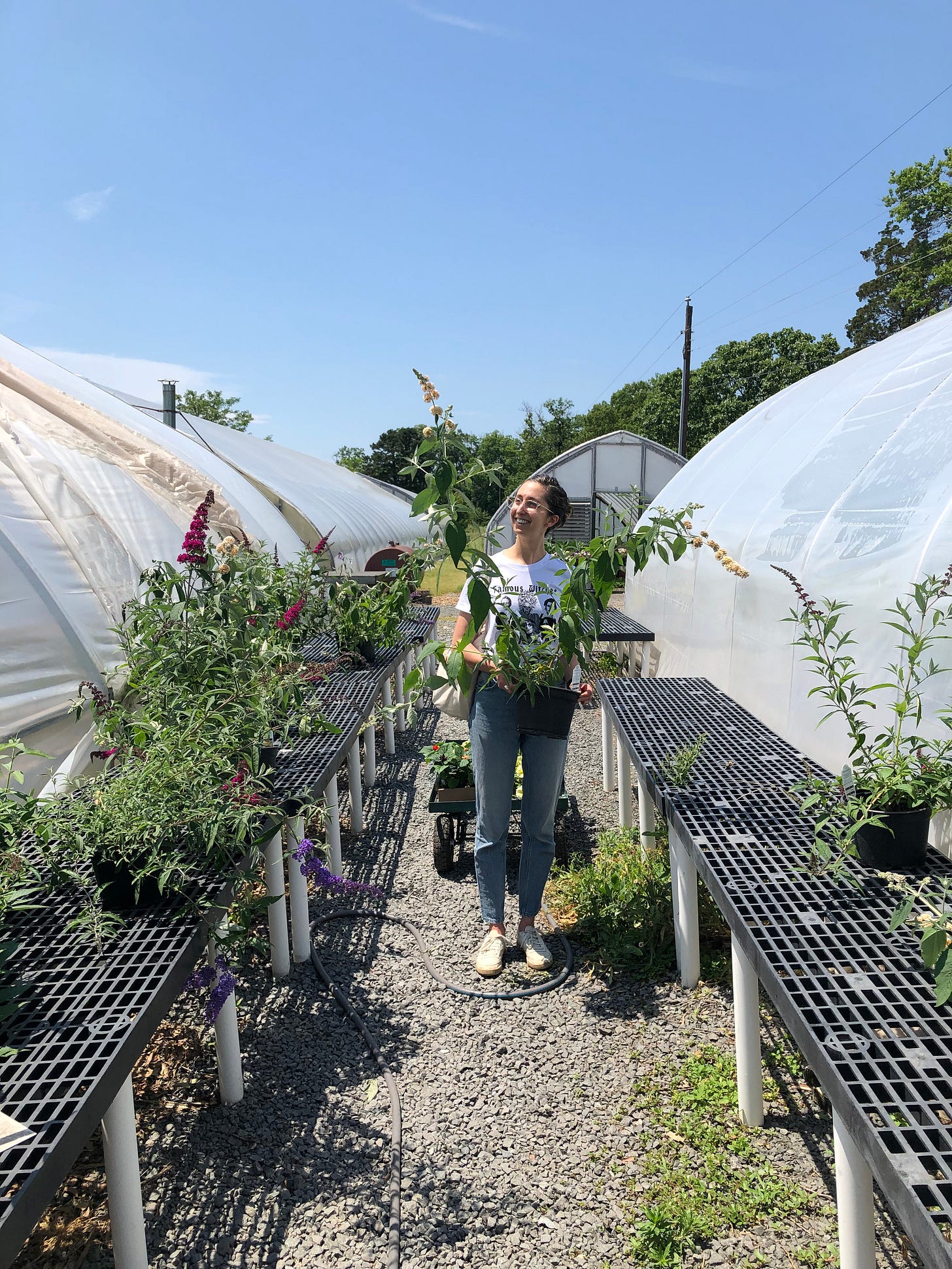
The garden grew with each year. Plants were dug up, moved, composted, replaced. Without two hedges blocking its light, the azalea flourished. One iris plant became a dozen irises, to be dug up, divided and gifted away. I added two trellises to take advantage of the height of our front porch for moonflowers that never took, overshadowed by the cool shade of the azalea in spring.
But it still took me awhile to figure out how to handle abundance. A couple narcissus grew into a clump of flowers, so heavy and liable to fall over in a spring storm that I bound them up with twine, like witches burning at the stake. The fanned foliage of irises completely covered up the azalea show, and their salmon petals that bloomed at the same time as the azalea totally clashed in color. Clumps of rudbeckia filled up the front of the plot, ready to overtake the garden in mid-summer, towering above everything else at four feet tall.
Despite four years of experience, I couldn’t figure out how to bring the gardens together in harmony. The photos above were taken from just last year, when I was healing from my double mastectomy and liver disease and didn’t have the energy to garden. My mom came to town, twice, to help care for me. I come from a line of gardeners, and I spent warm mornings on the front steps while Mom weeded, edged, mulched. Not able to garden myself, I read bulb catalogs, making note of plant color, height, and season, and started sketching new garden plans.
I had never done this before. I had never “outlined” my gardens in different seasons. But suddenly, everything clicked.
Fast forward a year, and the spring garden feels in right relationship. Daffodils have been divided and rearranged, irises have been moved to the back of the front garden where they can serve as a border, and smaller tulips, foam flower, white bleeding heart, anemone and phlox have been moved or added to the front garden. A hot pink and chartreuse bleeding heart from the back yard has been dug up and is a companion to the Barbie pink azalea. A rose is scaling the trellis with gusto.
I gardened last year, but not in the way I was used to. I wasn’t filling the page with 1000 words a day, getting dirt beneath my fingernails. Due to necessity, I took a step back, edited, and outlined. And now, I can see a story emerging.
What I’m writing
Lately, I’ve oscillated between writing scenes and pulling back to work on the outline. I have a running document called “Aboutness” and keep adding to it. I also took a break from writing in Scrivener and pulled out a big, beautiful green notebook I bought from Choosing Keeping in London to write by hand, instead.
What I’m reading
Picked up White Heat by M. J. McGrath again and aiming to finish soon. Started The Familiar by Leigh Bardugo. I haven’t read her other work (even though I have Ninth House on my shelf and watched the show, Shadow and Bone), but I was immediately hooked in by the plot of The Familiar and wanted to start it immediately. Spanish Golden Age! Secret Jews! Magic!
I also really need to start Slow Down by Kohei Saito for our book club…
What I read
Finished In Ascension by Martin MacInnes. If you sent my reading preferences through an AI grinder, this feels pretty close to what would come out. MacInnes writes sci-fi but with the voice of non-genre, literary fiction. There is climate change, deep plant and systems intelligence, a main character with Daddy issues from The Netherlands, aliens (maybe? jury’s out!), space travel, a Very Important garden, and a sense of wonder and awe, bordering on spiritual revelation. It reminded me of Contact by Carl Sagan (one of my favorite reads of last year) and the show, Scavengers Reign. I’m flying to London tonight and plan to pick up MacInnes’ other books, Infinite Ground (no Bookshop link, sorry!) and Gathering Evidence, while I’m there.
A helpful thing
We didn’t travel to the path of totality this year and regretted it. The next total solar eclipse hits Spain in August 2026. Start planning now!





